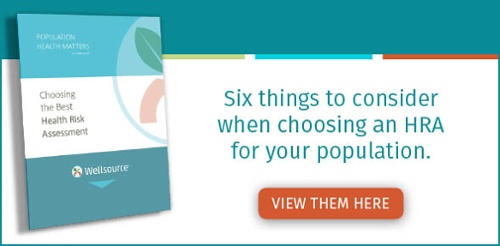Wouldn’t it be great if we could say to our friends, family, coworkers, and employees: “Hey! It’s time to get healthy - let’s work on those bad habits”? But that would be seen as incredibly odd (not to mention downright rude in most cases), so we don’t.

Instead, we encourage the people we care about - in any capacity - to get healthy in other ways so that their quality of life is the best it can be. The thing is, we can’t force people to become healthy. Even healthcare providers can only make recommendations to their patients to swap bad habits for healthy ones - and sometimes, even when those changes could mean a huge boost in health (such as quitting smoking), they go unheeded.
But many more people other than healthcare providers have a vested interest in an individual’s health. Employers, for example, would love to see each and every one of their employees in the office every day, bright-eyed and bushy-tailed, with nary a sniffle to be heard. Insurers would also love for their members to be on a healthy track since better overall health can lead to lower healthcare costs.
So where are the boundaries? What are the limits? Here are the answers to these questions.
No one can force someone else to be healthy. The boundaries and limits depend on whether you’re demanding and forcing versus suggesting and providing. For example, as an insurance company, you can’t force a member to maintain a certain body mass index (BMI) or keep their cholesterol at or below a certain point.
You could, however, provide your members with resources or incentives to achieve a healthy BMI or cholesterol level, such as access to a health risk assessment (HRA), so that they can get a clear view of their overall health risks. You could also offer rebates on gym memberships or cover dietitian services, as examples. While providing these benefits may initially seem as though they’re adding to costs rather than saving them, in the end, not having to pay for a lifetime of medications, specialist appointments and additional care will see significant cost savings.
As we mentioned earlier, employers also have a vested interest in the health of their team. For example, during the cold and flu seasons, having half of a department out could cause major problems across the board. But, you can’t force your team to take vitamins, get their flu shots, and wash their hands relentlessly.
What you can do, however, is provide them with resources and encourage them to take advantage of them. For example, you could coordinate a flu shot clinic (and, if you work in a large office building, perhaps work with your neighboring organizations to include their staff). You could also provide time off to receive flu shots, have a steady supply of tissues and hand sanitizer available, and let your employees know that you would truly prefer that they use their sick time and stay home, rather than “tough it out” and potentially infect their coworkers.
Looking for effective ways to boost your population’s health? Consider the first step to be a comprehensive HRA. Learn more about choosing your HRA by clicking below.








